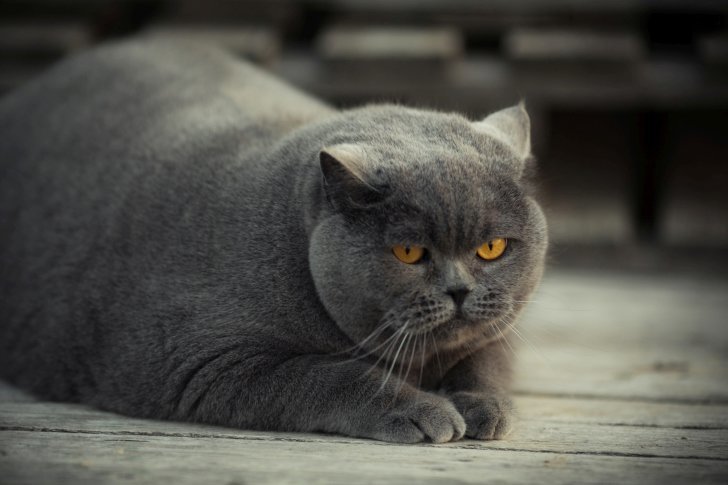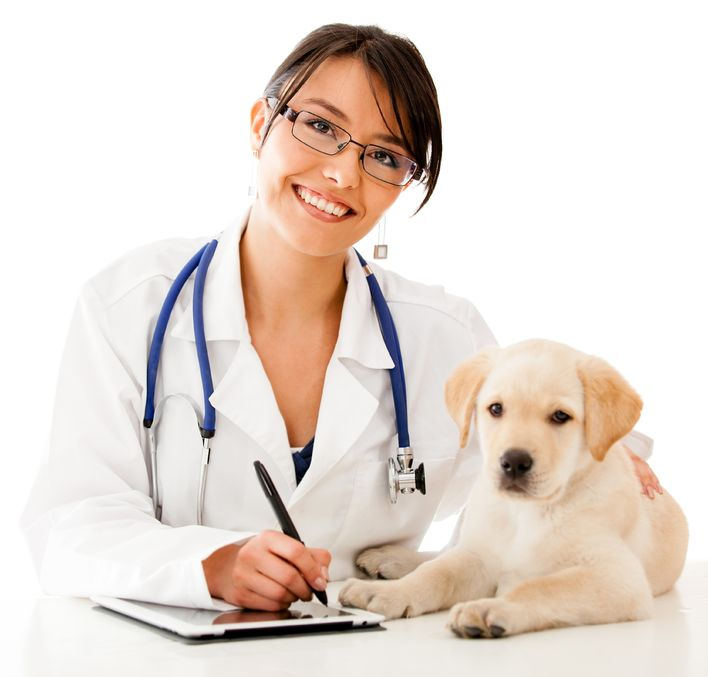Are You Making Your Pet Fat?
By epetsure

Pet Obesity Is Real
Obesity rates in the human population have continued to rise in recent years, but did you know that this dangerous trend also affects our animal companions? A recent survey conducted by the Association for Pet Obesity Prevention (APOP) found that more than 88 million pets (53% of dogs and 58% of cats) were classified as overweight or obese by their veterinarian. However, the problem is not limited to dogs and cats–birds, as well as small mammals such as gerbils and hamsters, may also become obese as well. Yet many pet parents are unaware that their pets are overweight. The APOP survey found that almost 95% of dog owners and over 90% of cat owners believed their overweight or obese pet was in a healthy weight range.
Pet obesity is observed in October. There seems to be some confusion on the exact date this is observed as some calendars indicate this is celebrated on October 7th, others the next day and yet others indicate it’s on the 14th. Regardless of the actual date, pet obesity is a growing concern deserving of its own – Pet Obesity Awareness Day.
What is certain is that as the year winds down and many families prepare for holidays, cooler weather, and a little less time spent playing outdoors, it’s important to keep an eye on our pets’ waistlines to ensure they stay as healthy as possible!
Causes of Pet Weight Gain
One study by VU University in the Netherlands found that overweight dogs were likely to have overweight owners, since our companion animals often share our eating and exercise habits. Other contributing factors include:
- Diet: The biggest cause of obesity in both dogs and cats is using pet food that is high in carbohydrates and unhealthy fats. Additionally, feeding dogs semi-moist food as a main diet source and including other foods such as table scraps, commercial treats, meat, and canned or homemade foods is associated with an increased risk of overweight and obesity. To help make the best dietary choices for your pet, the ASPCA has a page of frequently asked questions regarding healthy and safe pet food options, while NewsMax and DogFoodAdvisor break down the nutritional values of protein sources in pet food.
- Overfeeding: Giving pets too many treats, incorrectly measuring food portions, and feeding pets too many times during the day are major causes of overweight and obesity. Be sure to follow recommended portion sizes on your pet’s individual food brand, based on your pet’s size and activity level. In addition, knowing your pet’s eating habits can help you monitor their eating habits and note any necessary adjustments.
- Breed: Among dogs, Cocker Spaniels, Labrador Retrievers, Dachshunds, Dalmatians, Golden Retrievers, Rottweilers, and mixed breeds were more likely to be overweight or obese. According to PetMD in “Why Are Some Dog Breeds More Prone to Obesity?,” this tendency may be related to the wording of breeding standards. Essentially, by breeding to enhance select characteristics, genetic selection often enhances other undesirable traits, such as a predisposition for weight gain. In cats, the Sphinx, Ragamuffin, Exotic Shorthair, Manx, Peke-Faced, and Persian breeds are most likely to be overweight or obese, though the reasons for this are less clear than in dogs.
- Age: As with humans, the risk of becoming overweight or obese increases as pets become older due to decreased energy and physical activity, often associated with arthritis.
- Neutering: Among male dogs, cats, and gerbils, neutering is associated with an increased risk of unhealthy weight gain.
- Activity level: Just as with humans, an overall lack of exercise contributes to the epidemic of excessive weight and obesity in pets, often in direct correlation with the lifestyle habits of their owners. For pet owners living in apartments or shared housing as opposed to homes with backyards, it can be difficult to properly exercise or incorporate healthy activities for one’s pet. Demands on time including work, school, and other extracurriculars can also make it difficult for pet owners to ensure that their companions are getting enough exercise.
Dangers of Pet Obesity
Much like humans, according to APOP, being overweight or obese can reduce a pet’s lifespan by up to 2.5 years. Additionally, being overweight or obese also increases a pet’s risk of developing other health problems including:
- Cardiovascular problems
- Diabetes and glucose intolerance
- Certain types of cancer
- High blood pressure
- Immune system dysfunction
- Kidney disease
- Osteoarthritis
- Cranial cruciate ligament injury
- Hair loss and/or matting
In extreme cases, owners who willingly let their pets become morbidly obese may be charged with animal cruelty or neglect. Crazy thought isn’t it? I can imagine folks loving their pets too much and even misunderstanding their pets queues as hunger. Or what if the pet owner has some sort of memory loss like dementia and forgot they fed the pet already? In any case, I sure hope that before any cruelty charges are imposed that there is a thorough understanding of the situation and an education program to help.
Did you know that kitties and pooches aren’t the only pets threatened by obesity? According to birdchannel.com, obese or overweight bird species are prone to additional health problems as well, including:
- Fatty liver
- Ulcers and sores on feet
- Atherosclerosis
- Behavioral problems
- Dull feathering and glassy eyes from vitamin deficiencies
How to Tell if Your Pet is Obese
It may not be immediately obvious if your pet is overweight or obese, due to every pet’s unique body build. APOP provides the following basic guidelines for determining whether your pet is a healthy weight or is overweight:
Healthy Weight:
- Ribs are easily felt
- Tucked abdomen – no sagging stomach
- Definable waist when viewed from above
Overweight:
- Difficult to feel ribs under fat
- Sagging stomach
- Broad, flat back
- No waist
APOP also lists the ideal pet weight ranges for many breeds of dogs and cats, as well as a pet weight translator to help pet parents determine what their pet’s weight and body mass index (BMI) would be in human terms. For example, a 90 pound female Labrador retriever is equal to a 186 pound 5’ 4” female human, according to the APOP guide. But while these guidelines can be helpful, it is best to seek advice from your veterinarian regarding your pet’s ideal weight, as well as monitor your pet at home for any unusual weight loss or gain patterns, which could be a sign of more serious health concerns.
Here is a terrific infographic by Petco on a great article they wrote People Food and Weight Gain: See How Each Little Treat Adds Up it’s full of valuable insights at a glance:
Prevention and Treatment
Yearly visits to a veterinarian are essential for keeping pets healthy; preventative care can manage excessive weight, obesity, and other health problems before they become more serious. Annual veterinarian visits also provide a great opportunity to discuss your pet’s ideal weight and maintenance, along with appropriate diet and exercise options.
Preventing obesity is easier than helping your pet lose weight. The following suggestions can help you keep your pet’s weight within a healthy range:
- Feed your pets a healthy, balanced diet: Use a variety of species-appropriate foods and avoid feeding table scraps or excessive treats. According to APOP, a typical dog biscuit (25 to 27 cals) fed to a 20-pound dog is the equivalent of an average adult human eating two Keebler EL Fudge Double Stuffed Sandwich Cookies (180 cals). You can check the nutritional information for other pet foods to ensure you are choosing the healthiest food for your pet.
- Monitor portion sizes: Carefully and consistently measure out your pet’s food using a scale or other appropriate measure to ensure you’re providing the right amount of food based on your pet’s size and activity level. This is particularly important for most bird species, which require small amounts of many different types of foods.
- Stick to fixed feeding times: Depending on the species, feed pets twice daily–once in the morning and once in the afternoon, rather than leaving food out for them all day. According to PetMD.com, scheduled, portion-controlled feeding allows owners to monitor how much their pet is eating, in order to ensure they are eating an appropriate amount of food.
- Know your pet’s eating habits: Some pets know to stop eating when they are no longer hungry, others will keep eating as long as there is food available. Evaluate and adjust feeding schedule and/or amounts accordingly.
- Adjust your pet’s diet according to age: Dr. Barry Kellogg, senior veterinary advisor for the Humane Society Veterinary Medical Association, states that “As pets get older, their nutritional requirements and ability to digest some foods may change. They also lose some ability to concentrate urine and need to produce more, so they need to drink more water. Feed your senior pets high-quality proteins and avoid red meats that make their kidneys work harder.”
- Give love through attention: Spend quality time with pets, rather than giving love through food. Taking a walk or playing together is a more meaningful form of attention than a high calorie treat. Additionally, extra bonding time can keep your food-loving pet from turning to their food dish out of boredom.
- Regular exercise: Pets should get at least 20 minutes of exercise each day in order to burn fat and build muscle. Ensure that bird enclosures have space for a play gym and enough room for birds to fly.
- Get creative: Find ways to make exercise fun! Try joining a pet sports club, enroll in yoga classes for dogs or cats, check out the newest line of specialized treadmills for pets, or even build/purchase an indoor climbing wall for for your cat. Check out PetsMove.org for more fun ways to get exercise with your pets.
If your pet is overweight or obese, the following additional tips can help you help your pet lose weight:
- Talk with your veterinarian to help you decide on the best diet and exercise plan for your pet.
- Keep a food journal of what your pet is eating: Many veterinarian and veterinary nutritionists recommend writing down everything you feed your pet, including dry food, canned food, treats, and scraps for one week, and then reviewing it with your veterinarian to find healthier food choices or strategies to cut back on caloric intake.
- Make healthy substitutions: Instead of offering high-calorie treats, consider alternatives like baby carrots, pieces of rice cakes, or even taking a dog biscuit and breaking it up rather than giving it to a pet whole. There are a multitude of wholesome, DIY pet treat recipes across the internet as well — consider a homemade approach so that you know exactly what is going into your pet’s snacks; just be sure to keep an eye out for foods and ingredients not safe for pets.
- See that pets lose weight slowly: It is especially important for cats to lose weight slowly, as rapid weight loss puts them at risk for fatty liver disease. When cats lose weight too quickly, the extra fats in the bloodstream can overwhelm the liver, leading to liver failure and possibly death.
A Pet For Life
Not leaving on that sour note…the thing is, we pet caring citizens who let these furry critters into our homes and hearts, get hooked. We build and form these bonds with our pets that are meaningful to us. We want them to be happy and healthy and by our side for as many years as we can get. We can get many more years of their company if we are careful of what and how much we feed them and exercise them.
We hope this article has been informative and helpful. We wish you and your pet a long and healthy relationship.
Original Post BY:





